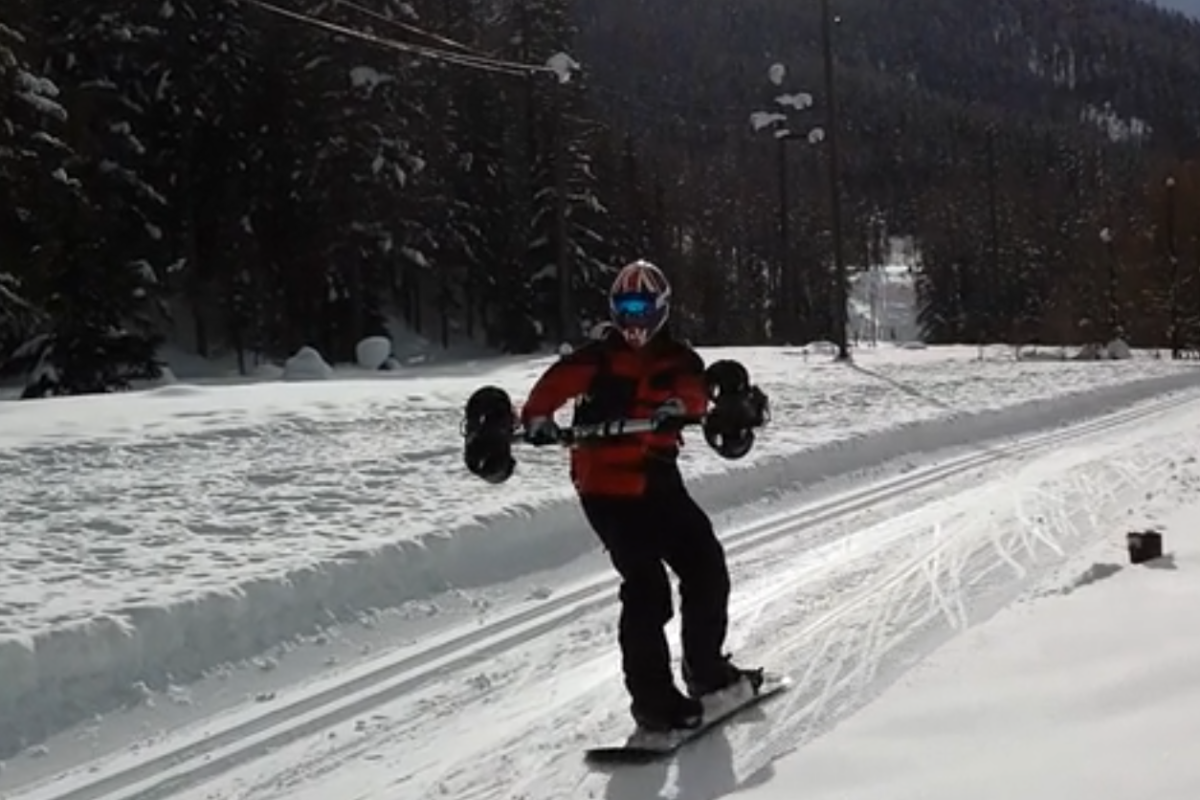Motor power can make already crazy, awesome adrenaline sports even crazier and … awesomer. Just look at designs like the Gnarboard and Jetboard. Unfortunately, filling a garage with various forms of motorized gear could quickly bankrupt a professional sports star. If an experimental thrusting system from UK-based Dreamscience Propulsion makes it to market, it could save some of those dollars by rolling the fun of several types of motorized boards into one device. The electric propulsion system lends motor-muscle to skiing, surfing, paragliding and beyond.
Good things happen when Ph.Ds get into action sports. After trying his hand at paramotoring, one such Ph.D, Dreamscience's founder and director Adam Contoret, decided he didn't like the experience of strapping a big, coughing engine on his back, so he started to tinker around with his own thrust system.
"The thruster is a very powerful motor driving a fan, about 30,000 rpm," Contoret explains. "A modern jet engine has a turbojet propulser module at the core of the engine and this drives a large fan at the front of the engine that generates most of the thrust. Electric motor technology has recently progressed to the level where the turbojet core can be replaced with a high power electric motor. A turbojet core generates massive amounts of heat, so an advantage of a motor core is the cool exhaust air stream making extreme sports applications possible without the danger of getting burned."

Dreamscience has gone through several different prototype designs using the thruster modules that Contoret describes. The latest prototype uses a foursome of 8-kW motor-powered thrusters to spin out 100+ lb (445+ N) of thrust. With the design still under development, Dreamscience hasn't put out a full spec sheet, but we do know that it uses a mix of carbon fiber fans and an aluminum frame, with a lithium-polymer battery pack powering the motors.
"Four [motors] draw about 700 amps at 55 volts on full tap," Contoret says. "That's a shed-load of power considering an average household draws 60 amps. The only way to get that kind of power is using the latest lithium polymer batteries, which have come on leaps and bounds in the past five years."

While the original motivator was paragliding, Contoret quickly realized that the system could also be used for other sports, including skiing, land boarding and surfing. It straps into the same type of harness used for power kites in sport derivatives like kitesurfing. The rider holds onto the central bar, controls thrust with either a thumb throttle or bite control (the latter allows for better grip), and steers the direction of the thrust as needed with their arms.
"The thrusters pretty much swap in to wherever you would use a power kite," Contoret says.
Unlike those kites, the thruster system provides instant power, without the need to rely on factors like wind and weather. It currently offers a brief five minutes of run time, but Contoret and crew are working to increase that.
Contoret imagines that the thrusters will also find use in increasing jump height and pushing riders up hills. They can be spun around to reverse-thrust to a stop.
The Dreamscience thruster design is still in the experimental stages, and Contoret has been seeking out athletes more experienced than himself to test it with different sports gear. He explains that Dreamscience works in development, patenting and prototyping, so it will have to seek out a manufacturing partner if a thruster-bar is ever to make its way to production. He roughly estimates a retail price between US$5,000 and $10,000, with the possibility of dropping to a more mainstream price level later down the line.
Earlier this northern winter, professional snowboarder Jamie Barrow grabbed hold of the Dreamscience thruster prototype and fired his way across a frozen lake in St. Moritz, Switzerland, hitting speeds of 50 mph (80 km/h). You can watch him in the video below.
Source: Dreamscience
















